The Green Action Experiential Exhibition at KL Tzu-Chi Jing Si Hall invites visitors on a journey through eight immersive zones, carefully designed to bring out the roots of overconsumption, the urgency of climate action, and the power of everyday choices. From creative installations to interactive experiences, the exhibition transforms complex ecological issues into tangible, heartfelt encounters, encouraging reflection, understanding, and action for a greener future.
In celebration of 30 years of Environmental Protection Mission, Tzu Chi KL & Selangor has unveiled the Green Action Experiential Exhibition, a six-month showcase designed to awaken ecological consciousness and inspire sustainable living. Held at the KL Tzu-Chi Jing Si Hall from August 24, 2025 to February 28, 2026, the exhibition is open daily from 10:00 AM to 4:00 PM, with free admission for all.
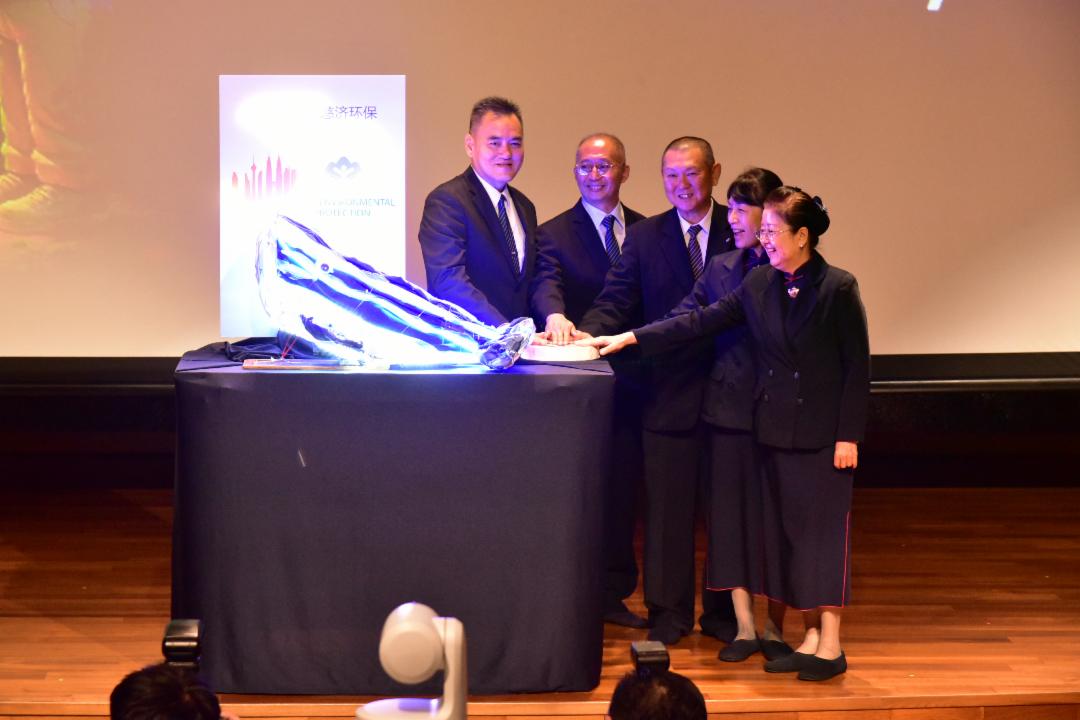
This immersive exhibition is not merely a display, but a transformative journey. Through eight thoughtfully curated zones, visitors are guided from emotional reflection to realisation and, ultimately, to concrete action. Each zone features interactive installations, multimedia presentations, and creative artworks, mainly crafted from repurposed materials by dedicated volunteers.
◎ A whale’s call to protect the ocean
One of the exhibition’s most striking features is the 11-metre-long whale installation. The entire structure – the whale and the platform – were constructed from 74 aluminium foil sheets, equivalent to 876,000 recycled drink packets. Standing tall at the entrance of Jing Si Hall, this majestic creation is a symbol of marine life’s vital role in climate regulation.
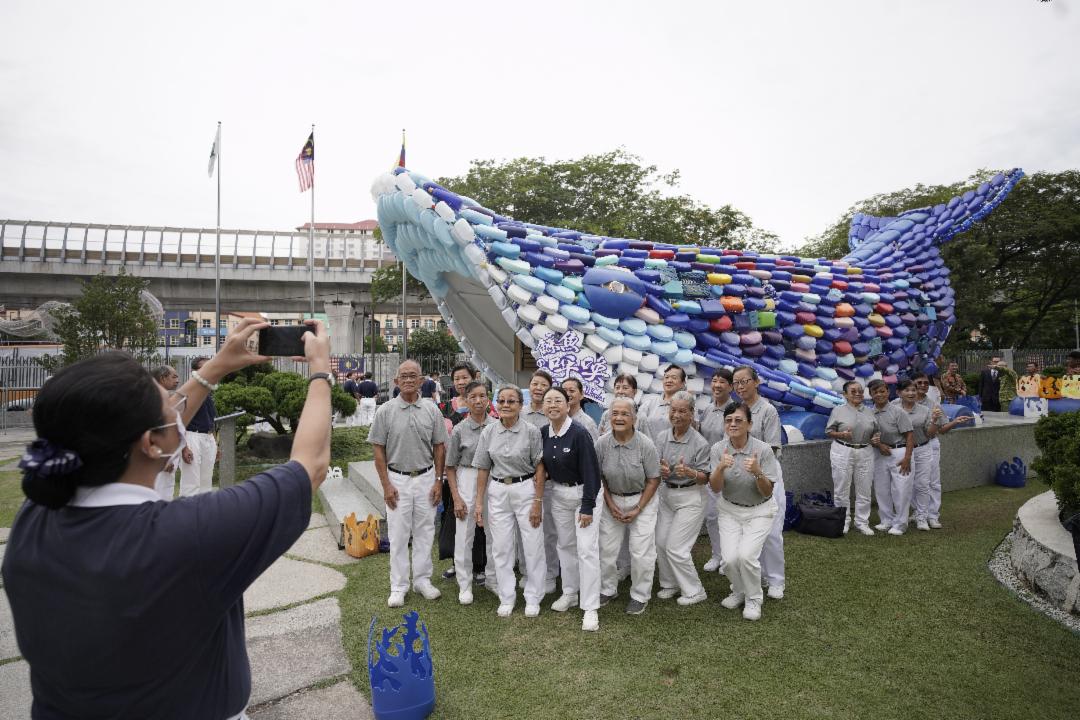
Inside the whale’s belly, visitors encounter phytoplankton models crafted from plastic waste. These microscopic organisms, nourished by whale excrement, absorb around 40% of global carbon emissions—three to four times more than the Amazon rainforest. The installation serves as a powerful reminder of the interconnectedness of life and the urgent need to protect our oceans.
Creating the whale was a labour of love. In addition to the donated aluminium foil sheets, Tzu Chi volunteers from across the Klang Valley collected materials and spent days adorning the structure. “All our productions for this exhibition are large-scale projects, made possible through collaborative teamwork,” said volunteer Ng See Seong, who plays a coordinating role. “We wanted the exhibit pieces to be big and impactful, so that they could raise awareness more effectively.”
◎ Eight zones of insight and inspiration
The exhibition unfolds across eight immersive zones, each designed to provoke thought and inspire change. Visitors begin their journey in Zone 1: The Bottomless Pit of Desire, where a heart-shaped tunnel constructed from approximately 10,000 recycled PET bottles gradually expands in size and shifts in colour—from pure white to black. This visual metaphor traces the evolution of human desire, from simplicity to excess, prompting reflection on whether our consumption is driven by genuine need or manufactured want.
In Zone 2: Imbalance of the Four Elements, a hut built from cultivated logs houses four sections representing Earth, Water, Fire, and Wind. Through sensory experiences, visitors are invited to feel the planet’s distress, brought on by human excess and environmental imbalance. The zone serves as a poignant reminder of the need to realign our lifestyles with nature’s rhythms.
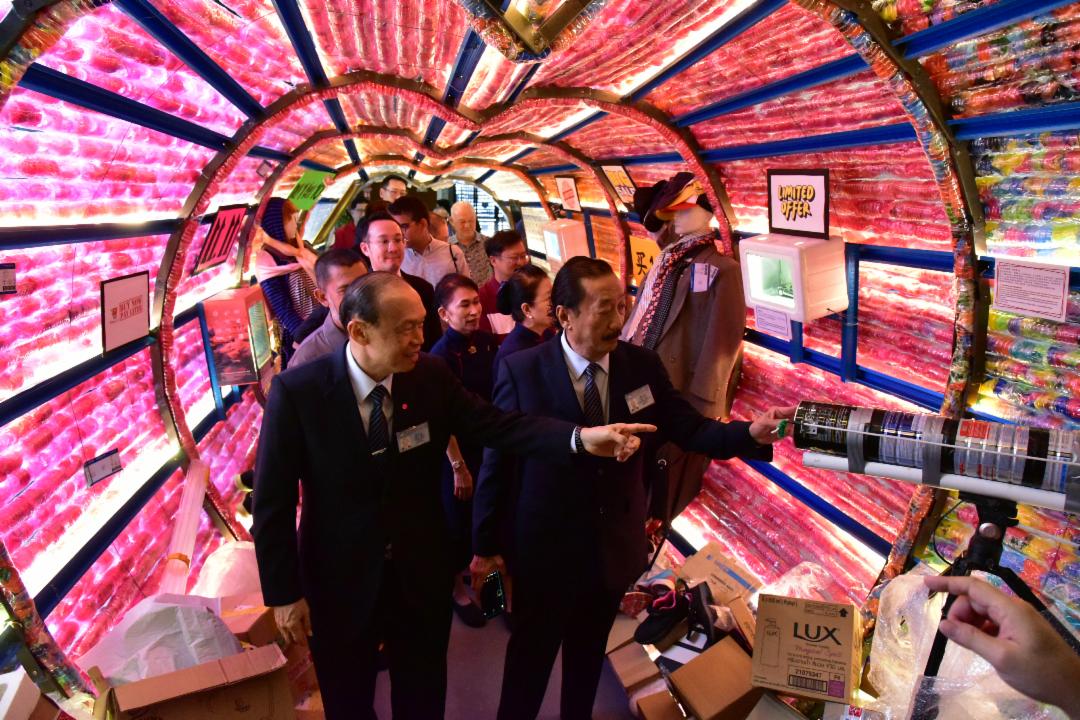
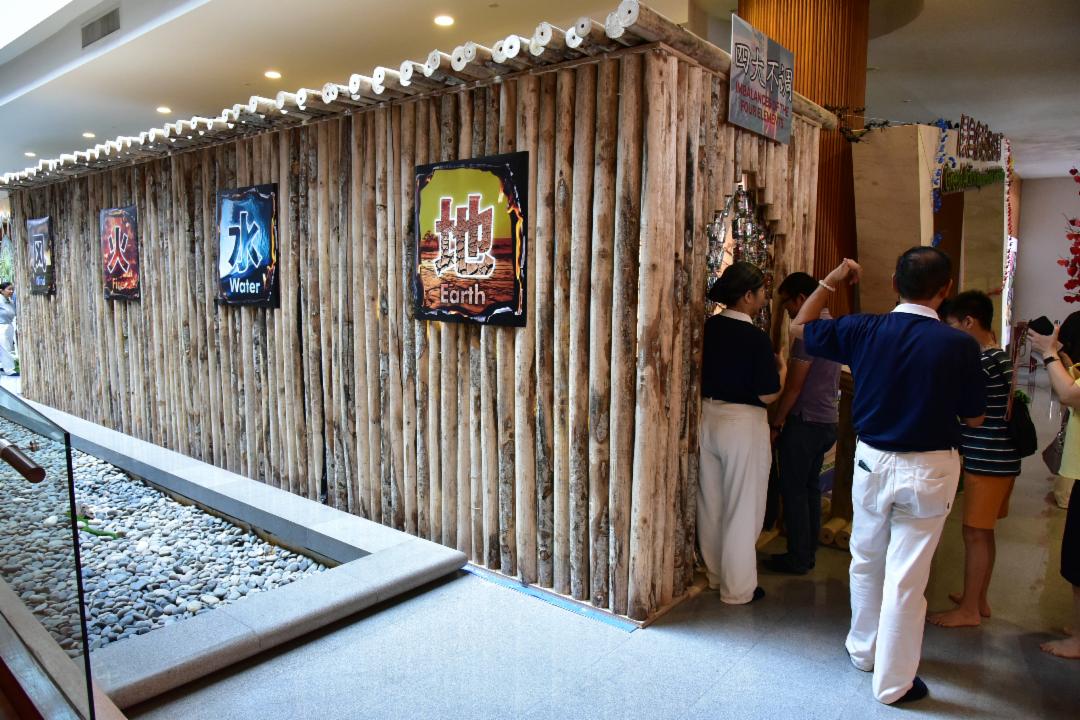
Zone 3: The Climate Clock presents a stark visual countdown, highlighting the urgency of keeping global warming below 1.5°C above pre-industrial levels. This installation underscores the limited time humanity is left to act, urging collective responsibility in addressing the climate crisis before it is too late.
In Zone 4: 5Rs for a Greener Planet, the principles of Refuse, Reduce, Reuse, Repair, and Recycle are brought to life through interactive displays. This zone demonstrates how small, everyday choices, like refusing single-use plastics or repairing broken items, can collectively make a significant impact on the environment.
Zone 5: Eco-Friendly Plant-Based Diet explores the environmental footprint of our food choices. Oversized vegetable and mock meat models embedded with RFID technology allow visitors to compare the nutritional and ecological differences between plant-based and animal-based diets. The zone encourages a shift towards plant-based eating as a powerful individual action for planetary health.
In Zone 6: Ten-Finger Formula, visitors learn a simple method for sorting recyclables using all ten fingers, each representing a different category—from plastic bottles to electronic waste. As participants engage in hands-on sorting, a garbage dump model splits open to reveal lush green landscapes and oceans, symbolising the Earth’s potential for renewal through collective recycling efforts.
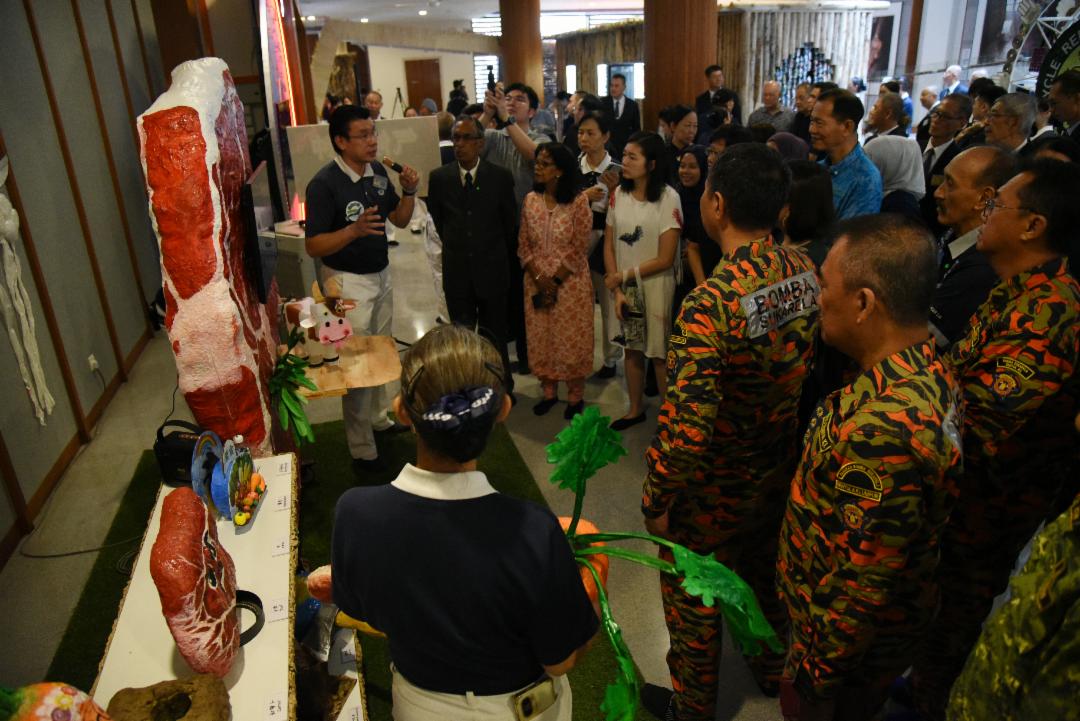
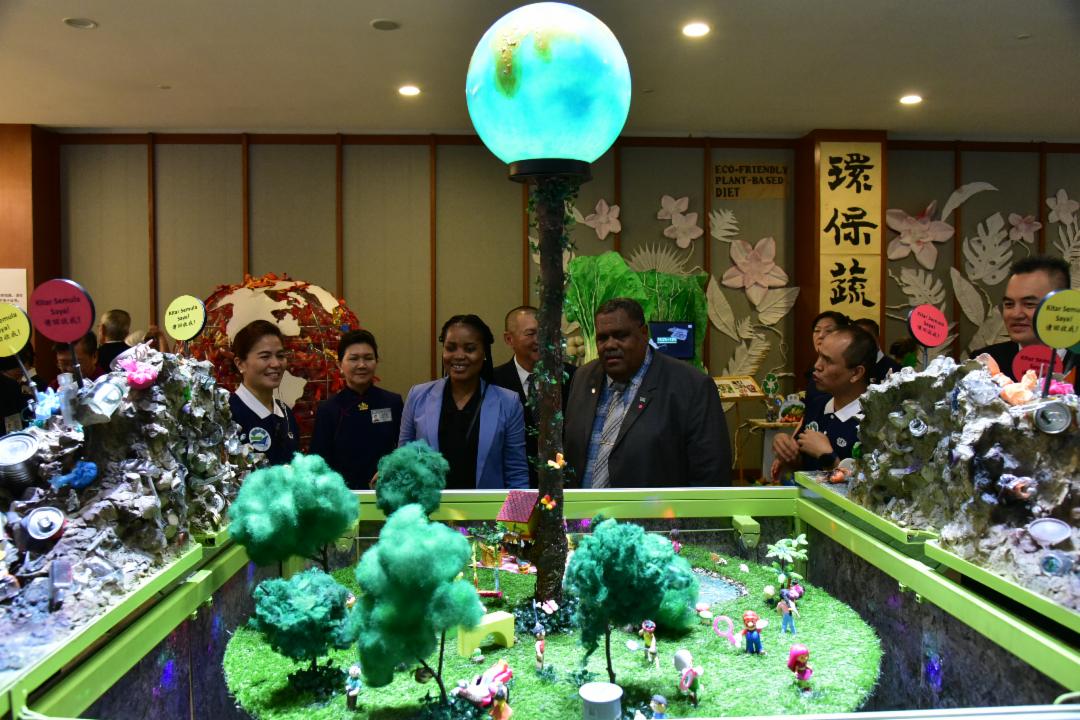
Zone 7: Pledge to Join the Green Movement marks the transition from awareness to action. Here, visitors are invited to fill out a Green Action or a Wish card, making a personal commitment to sustainable living and environmental stewardship.
Finally, Zone 8: The Call of the Whales features a breathtaking outdoor installation—a giant whale adorned with nearly 2,000 hard plastic bottles. It reminds us that whales are guardians of marine life and the planet’s balance. They are vital carbon sinks, each with the capacity to store as much carbon as a thousand trees.
◎ A community effort with far-reaching impact
The exhibition’s opening ceremony on August 24, 2025, drew nearly 600 attendees, including guests from city councils and the education sector, media, and the public. Among them was Syakina, an officer from the Selangor City Council, who shared, “What impressed me most was stepping into the hut with four partitions portraying Earth, Water, Fire, and Wind. Inside, we could truly feel the impact of climate change.”
The event also featured a moving performance by 116 recycling volunteers, aged 65 to 88, who delivered a sign language rendition of “Everyone Recycle”. Their combined age of over 8,000 years symbolised decades of unwavering commitment to environmental protection.
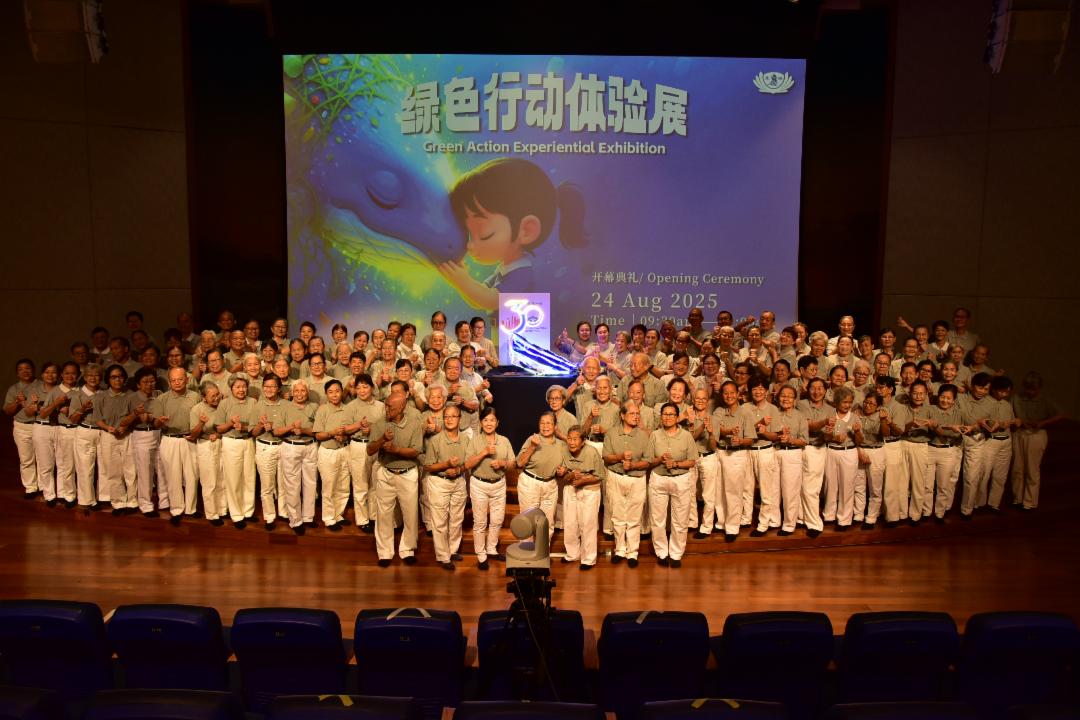
Corporate partners also played a key role. Terrynz Tan, Sustainability Director of Tetra Pak, expressed pride in the collaboration: “It’s such a meaningful project, so we gave our full support. I’m delighted to see the final product today.”
◎ Education and empowerment for all ages
The exhibition is designed to resonate with visitors of all backgrounds and ages. Khor Sue Yee, Director of Zero Waste Malaysia, praised the experience: “When you enter the ‘bottomless pit’ tunnel, you’ll see cardboard boxes just like those from online shopping. It hits you suddenly—‘Ah, this is happening in my own home!’ That’s why I think this exhibition is amazing.”
Educators also see its potential. Leong Kim Yeng, Senior Assistant of Chun Yin Primary School, remarked, “This exhibition is very meaningful. I hope it can be promoted more widely, especially in schools. From children, we plant the seeds of goodness, because they’re the pillars of the future.”
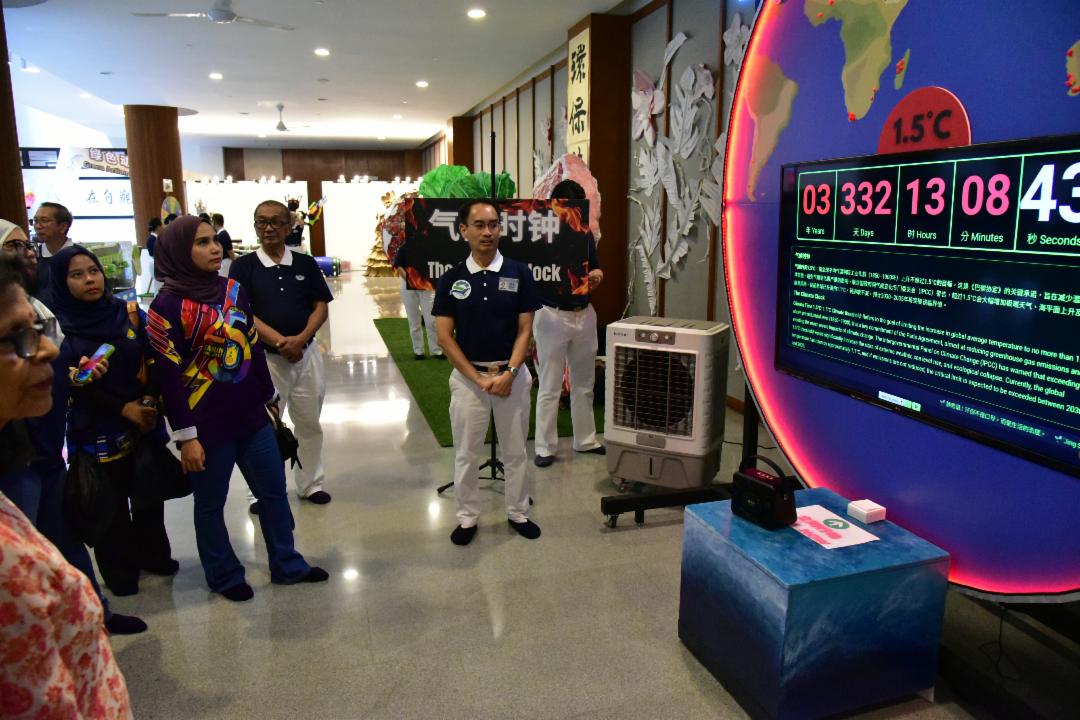
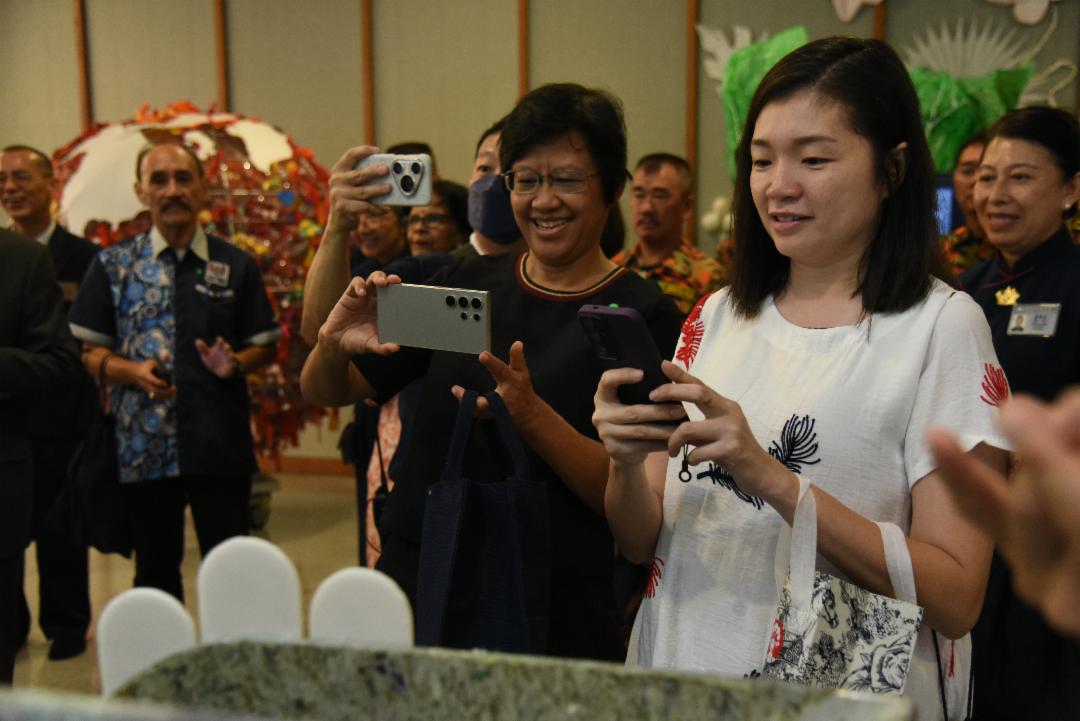
●
The Green Action Experiential Exhibition is more than a display; it is a call to action. It invites individuals, schools, community groups, and corporations to reflect, learn, and commit to sustainable living. We may not be used to it at first, but we can learn to enjoy it, making it as natural and essential as breathing.
Let us walk together on this journey of awareness, compassion, and action—for the Earth, for the future, and for generations to come.


![Visitors to the Green Action Experiential Exhibition are welcomed by an arch adorned with 2,000 handcrafted ants, symbolising the spirit of collective effort. [Photo by Lee Wei Kean] Visitors to the Green Action Experiential Exhibition are welcomed by an arch adorned with 2,000 handcrafted ants, symbolising the spirit of collective effort. [Photo by Lee Wei Kean]](/images/Articles/HB/2025/KL20250824_lwj02_257.jpg)
